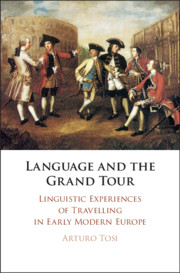Book contents
Introduction
Published online by Cambridge University Press: 23 March 2020
Summary
The Grand Tour was inspired by an attraction to past civilisations, and the desire to discover how the classical heritage had survived on the Continent. The formal doctrine of travel, that is to say a methodical approach to travel at the inception of the Grand Tour, emerged as a combination of the humanistic culture of Europe and the new reformed mentality, which was more supportive of the notion of travel as an instrument of education. In both the seventeenth and eighteenth centuries, the majority of travellers were young British gentlemen who, after a sojourn in France, continued their journey on to the Alps in order to reach Italy and spend time principally in Rome but increasingly also in Venice, Florence and Naples. The aim was to familiarize the younger generations with new ways of looking at the world, whether through conversation with famous people or through observing different cultures, with the ultimate purpose of acquiring mastery in the use of foreign languages. Over its three-century duration, the evolution of the Grand Tour as a social institution was conditioned, year by year, by the general history of Europe.
Keywords
- Type
- Chapter
- Information
- Language and the Grand TourLinguistic Experiences of Travelling in Early Modern Europe, pp. 1 - 22Publisher: Cambridge University PressPrint publication year: 2020

